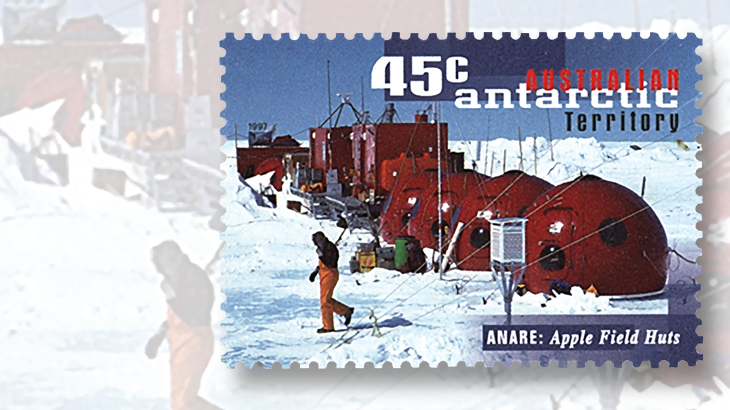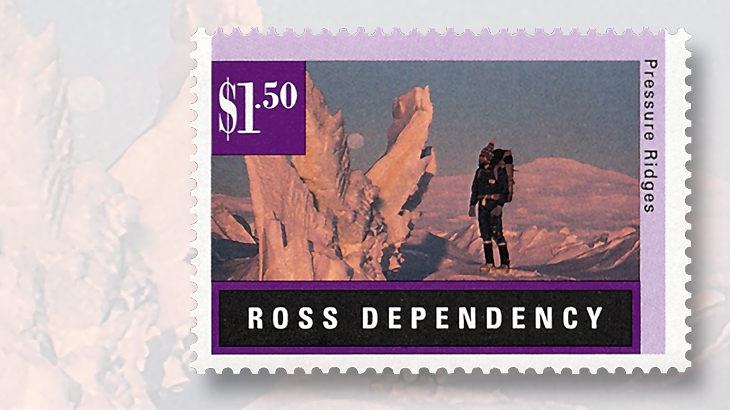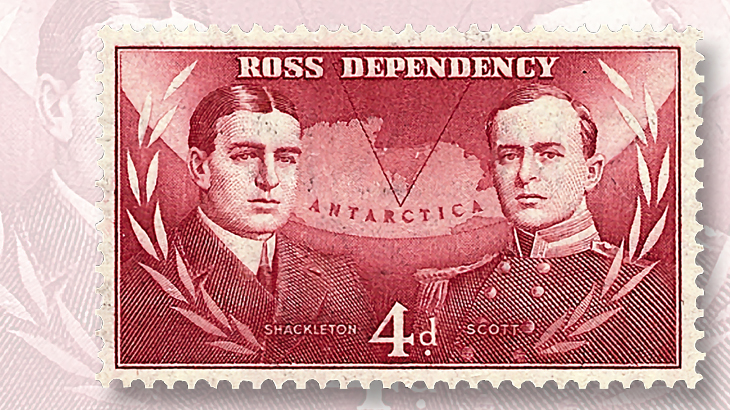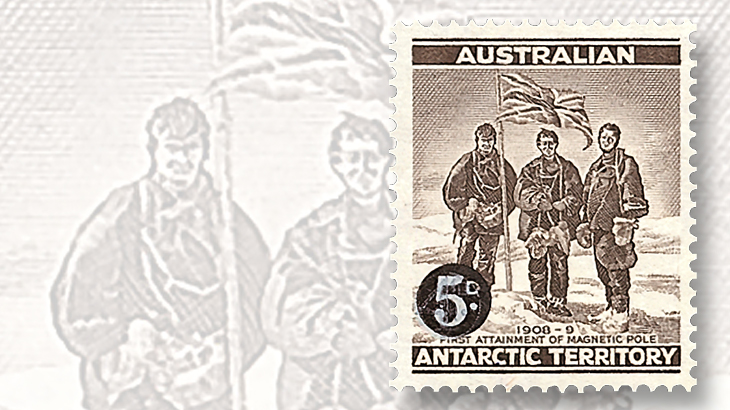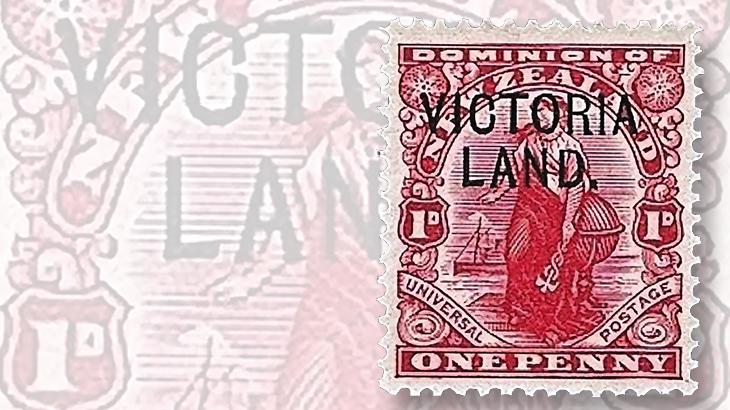World Stamps
Stamps of Antarctica: As far Down Under as you can possibly go
By Janet Klug
“Down Under” is a term that most people recognize as a colloquial reference to Australia and New Zealand, but there is another large island even farther down under than these two countries.
Keep going south, and as the weather gets colder and colder, eventually you will find yourself in Antarctica, the southernmost continent on earth — really the ultimate “Down Under.”
Between 1908 and 1943, seven nations laid claim to parts (sometimes overlapping) of Antarctica, beginning with Great Britain in 1908.
Connect with Linn’s Stamp News:
Sign up for our newsletter
Like us on Facebook
Follow us on Twitter
In 1923, New Zealand became the second nation to claim Antarctic land: a territory that was named Ross Dependency, in honor of Sir James Clark Ross, discoverer of the Ross Sea and some of what was called Victoria Land in the Antarctic.
The Australian Antarctic Territory, claimed in 1933, is the largest of the claims of the seven various nations.
Despite the fact that there are no towns or cities in this area Down Under, many of the nations that have Antarctic territories have issued postage stamps for their possessions. There do exist, however, stations that have been erected for the scientists who work in Antarctica.
New Zealand and Australia have both issued stamps for their Antarctic territories. New Zealand began early: In 1907, New Zealand overprinted 24,000 of its 1902 1-penny Universal Penny Postage stamps, depicting the allegorical figure of “Commerce,” for use by Lt. Ernest H. Shackleton and his crew on the British Antarctic Expedition (known as the Nimrod expedition, after its sailing vessel) of 1907-09.
The green overprint, in two vertical lines, reads “King Edward VII/Land.” The 1908 overprinted stamps are Scott 121a. Shackleton attempted to make landing at King Edward VII Land, but was prevented from doing so by unstable ice conditions. The expedition then moved to McMurdo Sound.
The New Zealand government had appointed Shackleton as postmaster for the New Zealand Antarctic territory and provided a circular datestamp for him to use as a postmark.
In 1910, Capt. Robert Falcon Scott was appointed postmaster of Victoria Land, and two New Zealand issues from a few years earlier were overprinted, becoming Scott 130d, the ½d Edward VII; and 131d, the 1d “Commerce.” This black overprint reads “VICTORIA/LAND.”
A second overprinting in 1912 produced stamps carried on the ship Terra Nova on a return visit to Antarctica during 1912-13.
The first stamps to be inscribed “Ross Dependency” were issued Jan. 11, 1957, in a set of four. The 4d denomination (Scott L2) features portraits of Shackleton and Scott, and the 8d stamp (L3) has a beautiful bicolor map showing the location of Ross Dependency in Antarctica.
New stamps were issued for Ross Dependency erratically from 1957 to 1994, but thereafter a set of stamps was issued annually. The images on the stamps picture birds, scientists at work, landscapes, and explorers.
For example, a 40¢ stamp issued in 1996 (Scott L40) shows a person in an ice cave.
Although issued by New Zealand, the Ross Dependency stamps are not valid for postage in New Zealand.
Australia’s first Australian Antarctic Territory stamps were issued in 1957, beginning with a 5p stamp (Scott L1) depicting Edgeworth David, Douglas Mawson, and Alistair F. Mackay, who reached the South Magnetic Pole on Jan. 16, 1909.
Like New Zealand’s Antarctic issues, Australian Antarctic Territory stamps focus on science, birds, fishes, explorers, transportation, and scenery.
A set of stamps issued in 1997, celebrating the 50th anniversary of Australian National Antarctic research expeditions, uses photographic scenes of field sites. The first issue in the set, a 45¢ stamp (Scott L102), shows a row of lightweight round, red, modular shelters popularly known as “apple huts.”
Unlike Ross Dependency stamps, which are not valid in New Zealand, Australian Antarctic Territory stamps (except for the first seven issued between 1957 and 1961) can be used for postage in Australia.
Collecting Antarctica stamps is a relatively inexpensive pursuit, with the images making a hot summer day feel cooler, or a winter night not as cold as it would be in the southernmost Down Under area.
In any case, collecting Ross Dependency and Australian Antarctic Territory issues is a great way to start a South Pole collection.
For more information about this collecting area, see the American Society of Polar Philatelists’ website, or contact ASPP Secretary Alan Warren, Box 39, Exton, PA 19341-0039.
MORE RELATED ARTICLES
Headlines
-
US Stamps
Oct 7, 2024, 3 PMMcMurtrie dismissed as APS education director following Sept. 21 arrest
-
US Stamps
Oct 7, 2024, 12 PMVasiliauskas named president of Mystic Stamp Co.
-
US Stamps
Oct 6, 2024, 5 PMApgar souvenir card available
-
US Stamps
Oct 6, 2024, 4 PMFirst Continental Congress and U.N. stamps receive Scott catalog numbers
